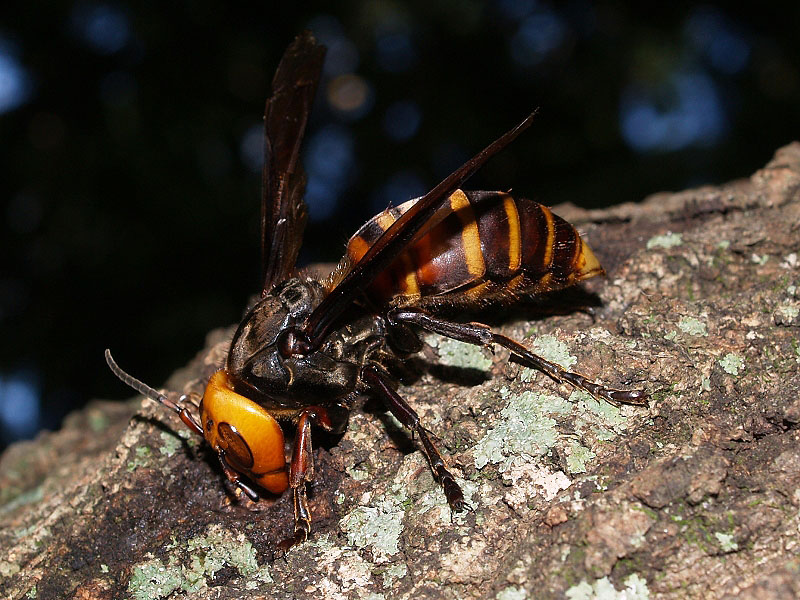Habitat
The Vespa mandarinia are found throughout
Asia and tend to live near mountains or hillsides (Matsuura and
Sakagami 1973). While some are found flatlands such as plains,
in a normal circumstance, the hornets would not likely live
there. V.
mandarinia seem to only have subterranean nesting cavities that
can be formed by themselves, tree roots, or even other animals
(Matsuura and Sakagami 1973). If the hornets come upon a
preexisting cavity, they tend to use that as their entrance to
the nest. The depth to the start of the nest tends to vary
anywhere from 6cm to 60cm. The queen hornets that discovers the nests tend to like the cavities
rather narrow compared to one that would be wider (Matsuura and
Sakagami 1973).
Many organisms can be found in a similar habitat to the
V. mandarinia. Some would include bees, mantises and other
hornet species (Matsuura and Sakagami 1973; Sugahara et al.
2009). The V. mandarinia are native to temperate and tropical
East Asia, as well as Japan. (Yanagawa et al. 2007; Sugahara et
al. 2009). You will not find V. mandarinia outside of South East
Asia generally (Matsuura and Sakagami 1973).
In the subtropical mountains of East Asia, the changes
between temperate forests and tropical forests are very
noticeable in
different elevations between the 20° and 30° latitude lines
(Liao et al. 2013). Typically the higher the
elevation, the more temperate vegetation was found (Liao et al. 2013). Some types of trees found in these areas are
conifers that can supply the sap to the V. mandarinia as food
source. Evergreens seem to be quite common in the mountains.

Some of the lower portions of the mountain tend to have more
tropical vegetation
(Liao et al. 2013). Some of the vegetation in this area represents a deciduous and evergreen
forests (Liao et al. 2013). The hornets sometimes
feed on tree sap, so it is not uncommon to find the V.
mandarinia in a forested area (Kakutani et al.
2007). These subtropical mountains contain a wide
variety
of flora
that is beneficial to the V. mandarinia.
Vast amount of trees provide the type of nesting area the
hornets need because of the large amount of roots and burrowing
animals in the mountains and hillsides (Matsuura and Sakagami
1973; Liao et al. 2013). Since the mountains have
such an abundance of places for the hornets to make their nest,
it is the perfect habitat for them. The plentiful amount of
flora here also attracts many pollinators like bees, which are a
major food source of the V. mandarinia (Matsuura and Sakagami
1973; Liao et al. 2013). Monsoons are a common
occurrence in the habitat of the V. mandarinia (Liao et al. 2013). The monsoons bring in humid air and help give
the lower regions of the mountains its tropical characteristics.
They also provide precipitation that helps keep all the
vegetation healthy (Liao et al. 2013).